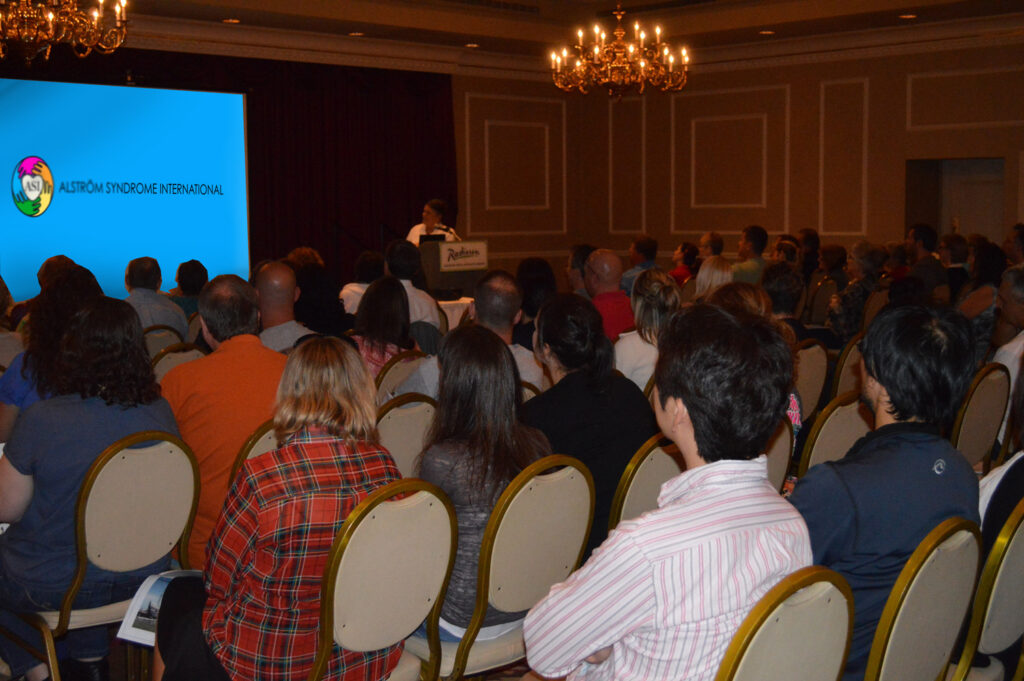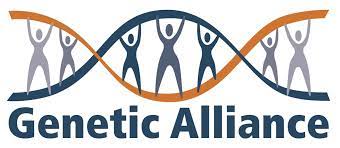PLEASE PARTICIPATE IN THIS IMPORTANT PROJECT!
Alstrom Research Connect FAQs
1. How do I participate if I have low vision and use a screen reader?
You can enlist the assistance of a family member or friend to go through the process of setting up your account and your privacy settings. You can also contact Alstrom Syndrome International (in**@al*****.org ) and we will set up the account for you and you can then access the survey and control your privacy settings using your screen reader software.
2. Why do I have to give an email address to get a code to proceed with the Registry?
The only piece of information sought before consent is an email address, and the use of this information is covered by the Privacy Policy. The email address is employed solely to confirm that the user is in control of the account. This is actually one protection that is employed to reduce the chance that someone is merely contending that they are someone else since it confirms that the user is at least in control of the email account that he or she is using.
3. What is the security level of the servers and how is the data encrypted? Who can access to my data and how?
Genetic Alliance’s PEER (Platform for Engaging Everyone Responsibly) – which provides the basis for the ARC registry – enables individuals to make their own health information available for researchers and support groups, in accordance with each individual’s highly granular permissions. Using PEER’s access controls, for example, one participant can say that absolutely no one has any rights to access any of their information (including de-identified data and/or identifying information), while another participant can say that all of her information is available to anyone who falls within a category of users who either have IRB approval or who have been approved by a trusted organization. The system assumes that most persons will not be at one extreme or the other, but instead will have different attitudes about how much, and how broadly that he or she wishes to share information, and that this will be dictated based on the type of information (i.e., de-identified or personally identifying), the levels of trust in the proposed recipient or the process by which they are selected, and the purpose for which the information may be sought. Accordingly, the system provides highly granular and dynamic access controls to empower individuals with this level of oversight, and has a strict Privacy Policy that indicates that the only access to the data will be based on the express wishes of the individual themselves.
The Genetic Alliance BioTrust Ethics Board and various Institutional Review Boards (discussed below) that have reviewed the PEER system have helped to establish a number of categories for access options that individuals may wish to consider. Depending on how individual users employ these tools, they may Grant (Allow), Deny (Decline to allow), or set a control called “Ask Me” that requires that the individual participant be consulted further, and provided with greater details about the intended use and the party seeking such access before deciding whether to allow or deny access. By using the controls, it is possible for individuals to restrict access to their information to a single researcher; just to researchers approved by the Medical Advisory Board of ASI; to researchers approved by the advisory board of other support organizations; to IRB-approved researchers working on a study that addresses one or more of the conditions affecting the individual; or to all researchers with IRB approval.
4. Can individuals or users can conduct their own studies using the data?
Yes, subject to the individuals’ right to determine who can access and use their respective information, this is possible. It is also consistent with the philosophy of the Patient-Centered Outcomes Research Institute (PCORI) initiative, of which this initiative is a part, as well as of Genetic Alliance, who is the Principal Investigator thereunder. Our collective hope is that we will be able to advance science by giving patients greater control over who can access and use their information that we will help make it possible for anyone who has a worthwhile idea that may assist the community, and who is willing to abide by responsible practices. This is also something on which we are working with UCSF (one of two academic medical center partners under the PCORI project initiative), and with whom we plan to test various UCSF tools they think may be useful in letting patients have a greater voice in devising studies of potential relevance.
5. Is there an IRB approval and if so by what board?
Yes. Actually there are several. The overall PEER Platform was reviewed and approved by Western Institutional Review Board (WIRB) in June 2014. The WIRB approval is explicitly referenced in a Prospective Participant Informational Notice that accompanies the confirmation email that is sent to anyone expressing possible interest in the registry. In addition to WIRB, the Genetic Alliance IRB has reviewed the ARC questionnaire instrument and materials, as well as other details. The BioTrust Ethics Committee of the Genetic Alliance is also actively overseeing this work, and has been instrumental in creating the PEER platform and its approach for empowering individuals to set granular and dynamic access levels.
6. How does one delete their account from the Registry?
One simply needs to click on the “Remove” button associated with a health profile. Alternatively, since the access controls are dynamic in nature, another option that is available to all users at all times is the ability to reduce who is permitted to access information in the registry and/or for what purpose such access may be used.
7. Who are the financial sponsors of the registry?
The ARC registry has been built under a grant from PCORI. ASI is one of nine disease advocacy groups participating in this project, along with UCSF and UC Davis, and Private Access, a technology vendor. Sharon Terry, the CEO of Genetic Alliance serves as the Principal Investigator.
8.Where can I find the Privacy policy and security guidelines on the Registry site?
Most of these are available by clicking on the public links to Privacy Policy or Terms of Service located in the bottom right hand corner of the Registry home page and accessible from every page of the system.





